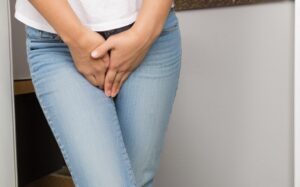Urinary incontinence is a common condition characterized by the involuntary leakage of urine between bathroom visits. While it can affect individuals of all ages and genders, the impact on daily life varies widely. Fortunately, there are effective self-care strategies and medical treatments available, tailored to the specific type of incontinence.
Causes of Urinary Incontinence

Urinary incontinence can result from a variety of factors. The most common causes include weakened pelvic floor muscles, nerve dysfunction, urinary tract infections, and anatomical changes due to childbirth, menopause, or prostate enlargement. Certain medications, chronic constipation, obesity, and respiratory conditions that cause frequent coughing can also contribute. In rare cases, tumors, bladder stones, or neurological diseases may be involved.
Symptoms
The symptoms of urinary incontinence depend on the underlying type but may include:
- Leakage of small amounts of urine, especially during physical exertion such as coughing, sneezing, or jumping.
- Sudden, intense urges to urinate, sometimes resulting in leakage before reaching the bathroom.
- Frequent urination, including waking at night to urinate.
- Difficulty emptying the bladder completely, leading to dribbling or overflow.
Types of Urinary Incontinence
There are several distinct types of urinary incontinence:
Stress Incontinence: Leakage occurs when pressure is exerted on the bladder, such as during exercise, laughter, or lifting. This is more common in women, especially after childbirth or menopause.
Urge Incontinence: Characterized by a sudden, strong urge to urinate, often resulting in leakage. This type is also more prevalent in women and may be associated with overactive bladder.
Mixed Incontinence: A combination of stress and urge incontinence symptoms.
Overflow Incontinence: The bladder does not empty completely, causing frequent dribbling. This is more common in men, often due to prostate enlargement or urethral stricture.
Diagnosis
A thorough evaluation is essential to determine the type and cause of incontinence. Diagnostic steps may include:
- Medical history and symptom assessment.
- Urine tests to rule out infection or blood in the urine.
- Bladder diaries to track urination patterns and leakage episodes.
- Physical examination, including assessment of pelvic floor muscle strength.
- Measurement of residual urine in the bladder after voiding, using ultrasound or catheterization.
- Uroflowmetry to assess the strength and flow of the urine stream.
- Cystoscopy or urodynamic studies in complex cases.
Treatment Options
Management of urinary incontinence is individualized and may involve a combination of lifestyle changes, physical therapy, medications, and surgical interventions.
Self-Care and Lifestyle Modifications:
Pelvic floor muscle training (Kegel exercises) is effective for many, regardless of gender. Maintaining a healthy weight, avoiding constipation, moderating fluid intake, and reducing caffeine can help. Smoking cessation is important, as chronic cough worsens symptoms. For women, using a tampon during physical activity may provide additional support.
Bladder Training:
Gradually increasing the interval between bathroom visits can help retrain the bladder, especially for urge incontinence.
Medications:
Medications may be prescribed to relax the bladder or increase sphincter tone. Side effects can include dry mouth, constipation, and, rarely, confusion in older adults. Topical estrogen may benefit postmenopausal women with vaginal dryness and urgency.
Medical Devices and Aids:
Absorbent pads, catheters, and other continence aids can improve quality of life when symptoms persist.
Surgical Treatments:
For stress incontinence, procedures such as the placement of a supportive sling (e.g., tension-free vaginal tape) may be considered if conservative measures fail. Overflow incontinence due to prostate enlargement may require surgical intervention. In rare cases, artificial urinary sphincters or other reconstructive surgeries are options.
Prevention
While not all cases of urinary incontinence can be prevented, certain measures may reduce risk or severity. Regular pelvic floor exercises, maintaining a healthy weight, managing chronic conditions, and avoiding bladder irritants are beneficial. Prompt treatment of urinary tract infections and addressing constipation can also help.
Takeaway
Urinary incontinence is a manageable condition with a range of effective treatments. Early evaluation and a tailored approach can significantly improve symptoms and quality of life. Open communication with healthcare providers and adherence to recommended therapies are key to successful management.
